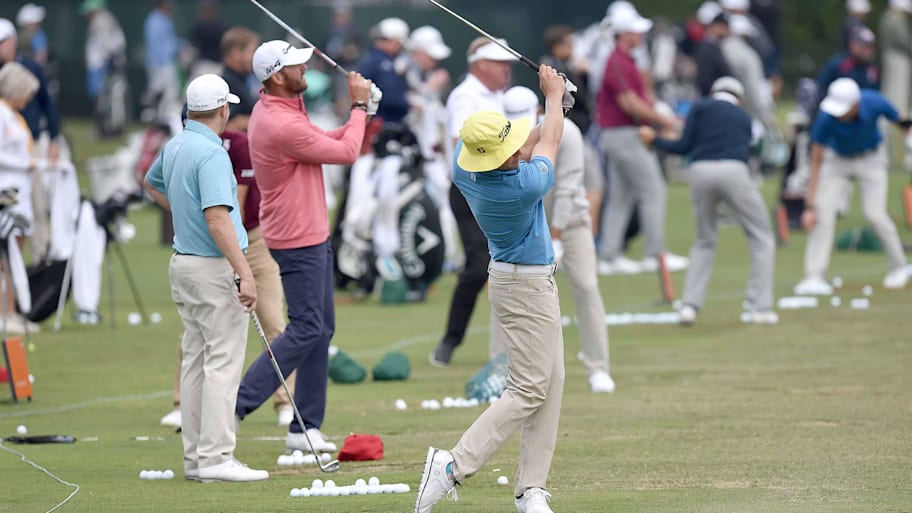
Welcome back to SI Golf’s Fact or Fiction, where we're eager to see scenery this week from a place the PGA Tour hasn't been in 60 years.
Once again, we’re here to debate a series of statements for writers and editors to declare as “Fact” or “Fiction” along with a brief explanation. Responses may also (occasionally) be “Neutral” since there's a lot of gray area in golf.
Do you agree or disagree? Let us know on the SI Golf X account.
The PGA Tour is reportedly considering changing its field and exemption structures, including dropping the number of fully exempt players each year from 125 to 100. That’s a move which will greatly improve competition.
Bob Harig: FACT. There’s no doubt that this makes what Rory McIlroy referenced months ago as a more “cutthroat” tour. Less spots means it inherently is more competitive. There is going to be more urgency. In theory, this will also make the fields stronger, although there is certainly an argument to be made that that depth in golf means a lot of good players will be left out.
Jeff Ritter: FACT. It’s rough news for fringe Tour players ranked 100-150 with limited status, but this move would strengthen fields, which immediately strengthens the TV product. It essentially raises the stakes for all events, which cutthroat as it may be, could be a good thing.
John Schwarb: FACT. These are essentially job cuts. The No. 150 player that would get a decent number of starts in the old structure will find it a lot harder to get tee times, and when he does he’s going to have to play his tail off. There’s going to be a lot more to keep an eye on than just tournament winners, and that’s a plus for the Tour.
With the aforementioned possible field changes, fewer players would compete in regular Tour events and the belief is that pace of play would therefore improve. Players would be faster if there were fewer of them on the course.
Bob Harig: FICTION. This might help marginally and give the appearance of moving things along faster. Undoubtedly, when you have less players, there is not the bottleneck you see with full-field events going off both tees. That is a slow-play nightmare and would be improved. But the bottom line is without much enforcement of pace-of-play penalties, players take their time. Their routines have not gotten faster.
Jeff Ritter: FICTION. Players would be faster if we made them ditch Aimpoint and a host of other shenanigans that grind an average Tour round to snail’s pace. But I agree that fewer players on the course would give these interminable rounds a better chance of finishing before dusk.
John Schwarb: FICTION. Like Bob said, players are in their own little worlds and the only time you see quickened routines is when they’re trying to beat darkness or get out of town (Matt Kuchar excepted). The only way to fix slow play is to hit players in their scorecards.
Tyrrell Hatton won the Dunhill Links Championship, one week after Jon Rahm lost the Spanish Open in a playoff. The belief that LIV golfers have lost their edge by playing fewer competitive rounds in their league is overrated.
Bob Harig: FACT. It always was a lazy narrative. Anyone who lost their edge—and it’s possible some have—suffered that fate due to their own actions. There have always been other competitive options outside of LIV Golf for those who wanted to keep sharp with more competition, and as professionals, you figure out a way to adjust. It’s far more fair to ask if some players lost their edge due to the money rather than the format.
Jeff Ritter: NEUTRAL. We can only base this off events where LIV guys mix with other Tours. Brooks Koepka and Byson DeChambeau have won majors and seem as motivated as ever. Jon Rahm busted in the majors this year but it doesn’t seem accurate to claim he’s lost an edge. But there are also several guys on that tour who not long ago were at the height of their powers but now seem content to drift along, like Dustin Johnson, Abe Ancer and Louis Oosthuizen to name a few.
John Schwarb: FACT. Too many have trotted that thinking out as a one-size-fits-all trashing of LIV’ers and it’s simply not true. Sure, some have likely lost some drive, that happens in all walks of life with people who suddenly come into a lot of money. But there are others, like Rahm and Hatton, who are wired differently and not as affected when they went to the Saudi-backed league. Plus, is it possible that LIV’s schedule could leave them fresher for tournaments at this time of the year?
Bethpage Black’s course superintendent said rough heights will be lower for the Ryder Cup than for major championships held there, presumably to enhance the U.S. team’s length advantage. Such course tweaks will tilt the competition toward the home team.
Bob Harig: FICTION. Rory McIlroy and Jon Rahm hit it pretty, far too. And they miss their share of fairways. They just didn’t do so during the Ryder Cups in Paris and Rome. Lighter rough will help them, too. It’s still about making putts. And having more birdie chances as opposed to hacking it out of the rough is a far better way to go for match play and the Ryder Cup.
Jeff Ritter: FACT. This is straight from the course-setup playbook the U.S. implemented at Hazeltine in 2016 and Whistling Straits in 2021. Ultimately the players themselves will decide the outcome and not the superintendents, but there are clearly analytics guiding things here and they will have an impact.
This article was originally published on www.si.com as Fact or Fiction: Smaller PGA Tour Fields Will Bring Faster Play, More Competition.







